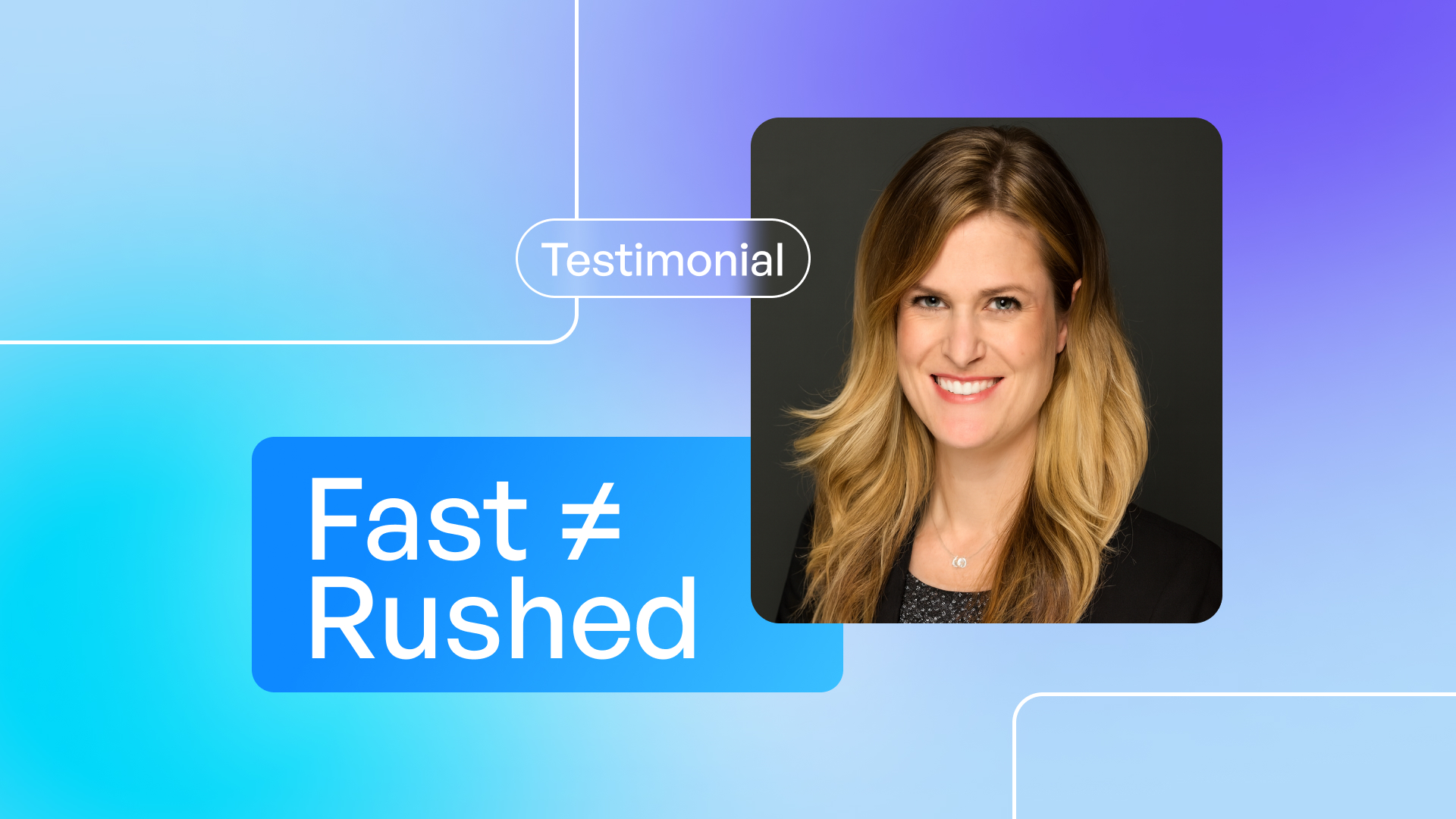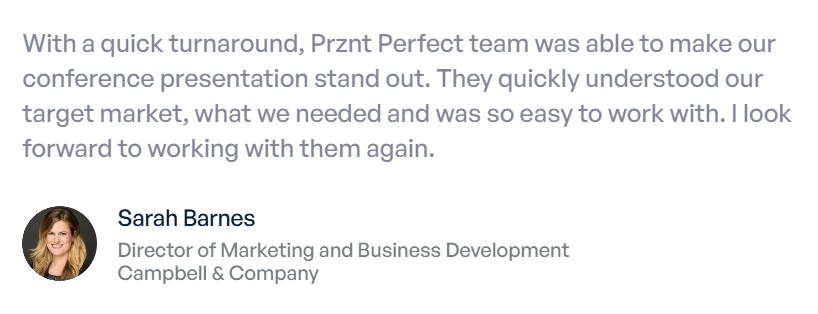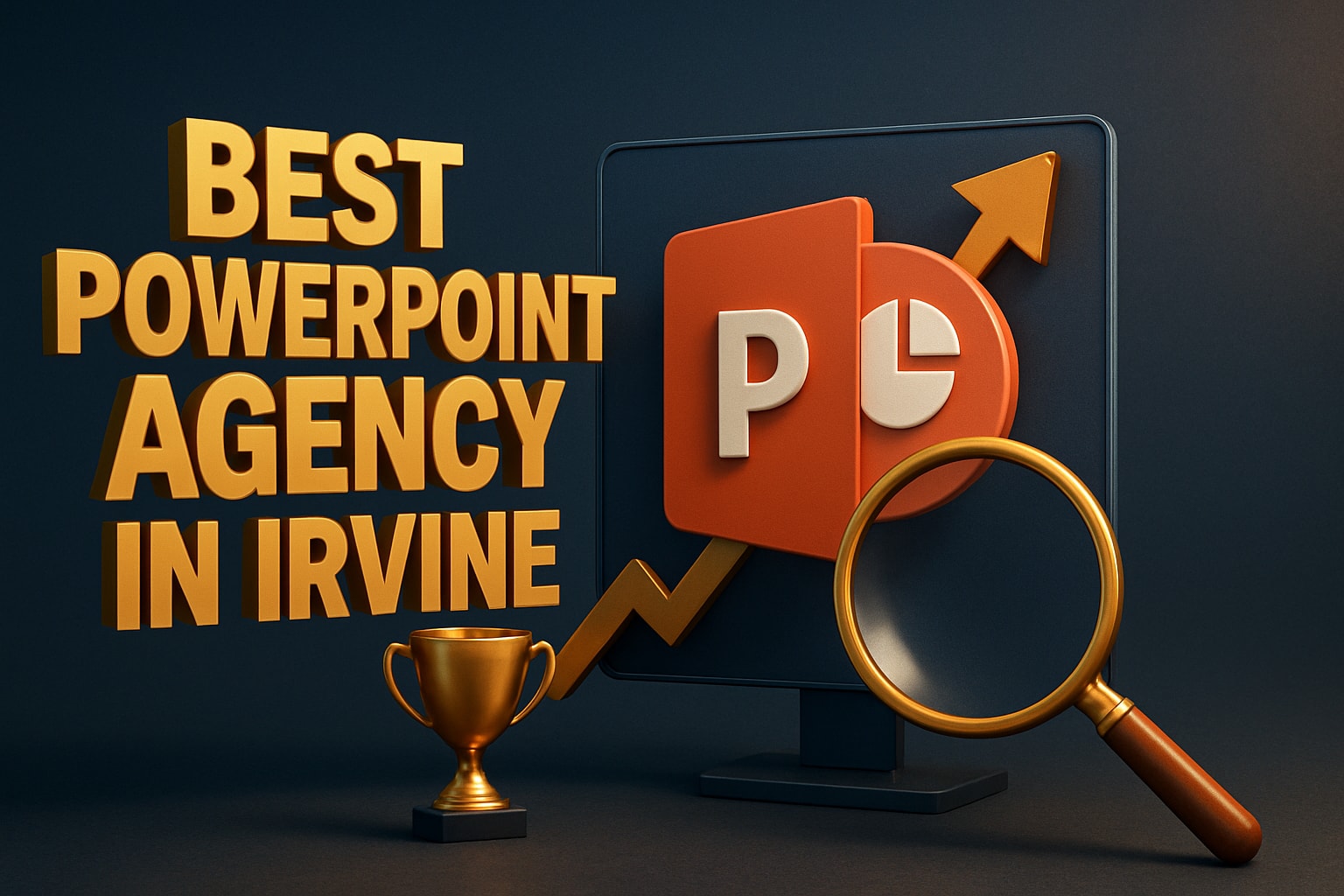Why Quick Turnarounds Still Deserve Great Thinking

When Sarah Barnes reached out, she had a real deadline coming up.
Not just “we’d love to get this soon” — but an actual high-stakes presentation for a room full of industry peers. The kind where every detail matters and there’s no time to second-guess.
Her brief was short and honest:
“We need this to stand out. And we need it fast.”
We were all in. Not because we love the pressure, but because we’ve seen it work — when time is tight, the focus sharpens. And good work doesn’t have to take forever.
What working fast actually looks like
A short timeline means there’s no space to wander.
You don’t get pulled in ten different directions. You zoom in on the core — who you’re speaking to, what they need to know, and what you want them to remember.
Sarah’s team at Campbell&Company had that clarity from the start. They knew the audience, they had content, and they trusted the process. So we jumped in, shaped the story together, and started building right away.

Tight timelines can lead to better slides
When things click, you feel it.
We’ve noticed this pattern over and over — the decks that come together quickly, with clear intent and focused feedback, often turn out stronger. There’s less fluff, more purpose. No endless back-and-forth. Just solid decisions and momentum.
With Sarah, we went from a rough outline to a confident final deck in no time. Everything aligned. The slides felt right. The story landed.
What made it work
Here’s what helped us move fast without feeling rushed — and what might help you, too:
- Early alignment.
- Before opening the deck, we spent 20 minutes talking through the goals, the audience, and the tone. That saved hours later on.
- Clear, quick feedback.
- No endless threads or backtracking. The team made confident decisions and kept things moving.
- Strong starting point.
- We weren’t starting from zero. Sarah’s team already had content, visuals, and a clear sense of what success looked like.
Working quickly isn’t about skipping steps — it’s about knowing which ones matter most.
When it clicks, it shows
We’ve seen this pattern again and again. A clear brief and a tight timeline often lead to sharper slides. You don’t overthink. You don’t add fluff. You just build what works.
In Sarah’s case, that meant going from rough content to a confident, ready-to-present deck — without dragging the process out. The result was a presentation that felt right for the audience and right for the moment.
Need something sharp, soon?
Book 30 minutes with us — it’s free. We’ll take a look, ask a few smart questions, and help you make your slides sharper without starting over.
Keep reading

- This is some text inside of a div block.lay out the facts clearly and compellingly. Use data to establish the ground reality, but remember that facts alone are like the individual strands of a tapestry—necessary but not complete.lay out the facts clearly and compellingly. Use data to establish the ground reality, but remember that facts alone are like the individual strands of a tapestry—necessary but not complete.
- This is some text inside of a div block.lay out the facts clearly and compellingly. Use data to establish the ground reality, but remember that facts alone are like the individual strands of a tapestry—necessary but not complete.




